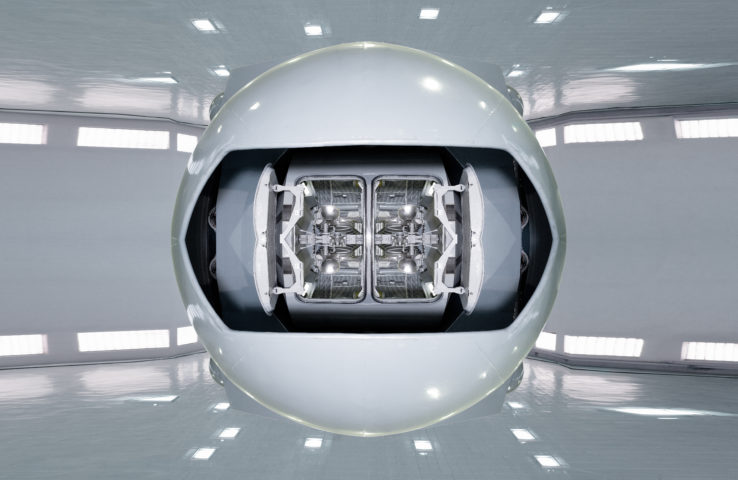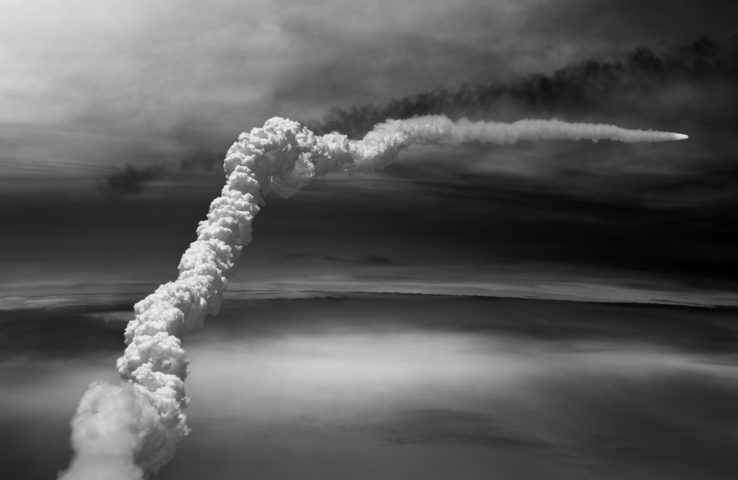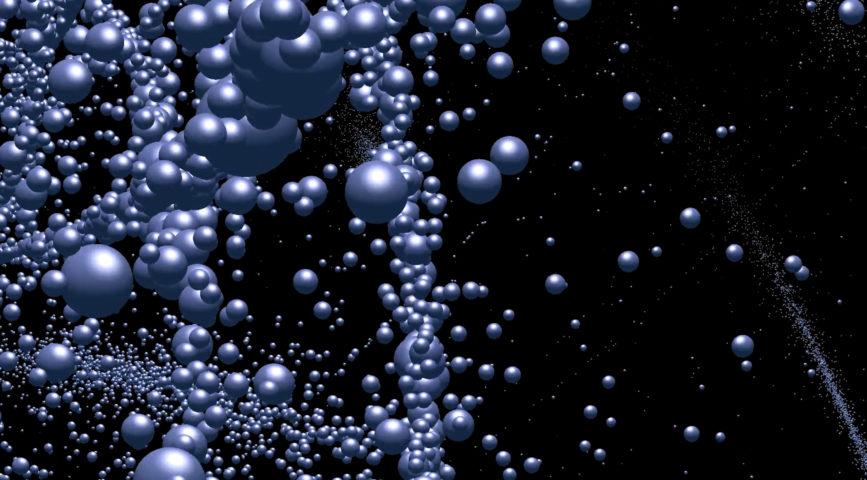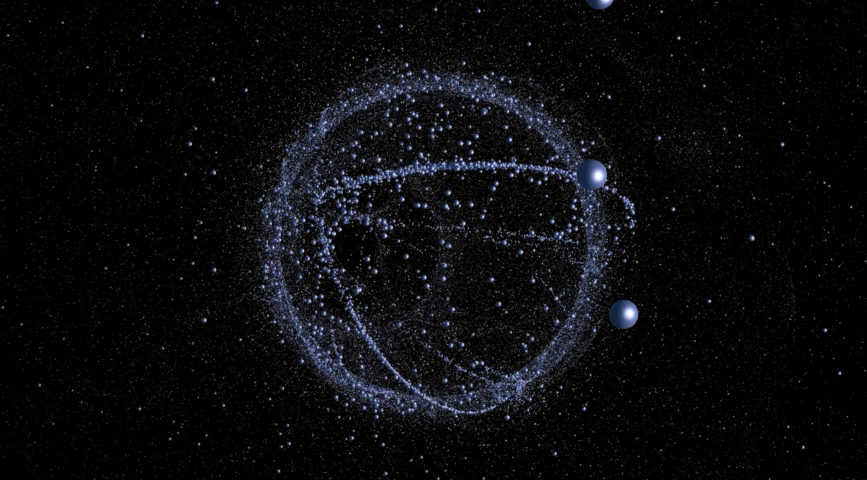





Arthub Favorite: Week 153
Michael Najjar: Outer Space
Opening:2019 September 20th, 18:00-20:00
Duration: 2019 September 20 – October 27
Venue: BANK, Building 2, Lane 298 Anfu Road, Shanghai, 200031
On the 50th anniversary of man’s first landing on the moon, BANK willpresent Outer Space, Michael Najjar’s debut solo exhibition in China. Through immaculate, large-scale photo compositions, 3D simulated videos and insightful texts by some of the most important luminaries in the field, Najjar takes a complex and critical look at the technological forces that are transforming our relationship with the galaxy and the 21st Century.
Michael Najjar‘s Outer Space series examines the latest international developments in space exploration and the way that these advancements have and continue to shape our future life on earth and beyond. This 8 + year project has brought Najjar to the far reaches of the planet as well as the earth’s atmosphere and, by this time next year, he will have been the first artist to physically venture into outer space with the Virgin Galactic.
By penetrating the universe we change our understanding and perspective on the most fundamental questions confronting humankind and nature- Who are we? Where do we come from? Where are we going? Our impulse to explore the stars bears witness to humankind’s innate sense of curiosity and unquenchable desire to transcend our frontiers. Najjar’s work masterfully profiles the imagination, technology and science that is propelling us into the galaxies.
More about Outer Space
Michael Najjar’s “outer space” work series deals with the latest developments in space exploration and the way they will shape our future life on Earth, in Earth’s near orbit and on other planets. From antiquity to the present day, the Universe has inspired mankind to go beyond the horizons of the known. The attempt to penetrate the far reaches of space bears witness to our innate sense of curiosity, our drive for exploration and our unquenchable desire to push back frontiers and go beyond them.
Today the human species is facing growing threats on planet Earth including overpopulation, climate change, terraforming, diminishing resources, and shortages in the energy, food and water supply. Despite the fact that we need to protect our home planet, colonization of our solar system might be the ultimate solution to guarantee the survival of our species. Innovations in space travel will engineer sustainable technologies that will help us to better maintain our own Spaceship Earth. By expanding human presence throughout the solar system we will achieve the next level of evolution, the homo spaciens – a new type of human being highly adapted to the space environment and more capable of exploring, capable of living away from Earth. We need to extend our existential framework of reference from one that is purely Earth-bound to one which includes Earth orbits and outer space in general. There is no dichotomy between Earth and space – the Earth itself is already in space.
The cultural dimension represented by emerging space technologies is very much at the center of Najjar´s work. This ongoing series started in 2011 with the final launch of the American Space Shuttle Atlantis and currently comprises 34 photographic artworks and 5 video works. The artist has traveled to the world´s most important spaceports like the Kennedy Space Center, Baikonur Cosmodrome in Kazakhstan and the Guiana Space Centre near Kourou in French Guiana. He has met with numerous scientists, engineers and astronauts, and visited space laboratories around the globe constructing new spacecrafts, satellites and telescopes. He has traveled to the Atacama Desert in Chile to photograph the world´s most powerful telescopes located on sites across high altitude plateaus in the Andes. In China he photographed the world´s largest telescope hidden in deep forest; in Iceland he explored the issue of terraforming, climbing down into glacier caves to portray the melting ice sheets. His collaboration with leading scientists and space agencies has given him privileged access to locations which are usually unknown to, and unseen by, the public. The present series focuses on the interfaces between art, science and technology, and blends documentary and fictional scenarios to create visionary enactments and unique artworks of current and future space explorations.
One essential hallmark of Najjar’s work is the way it is deeply informed by an experiential hands-on approach. The intimate experience of “living through” situations which providing the leitmotifs of his art is vital to the artist. This performative aspect has also become a fundamental part of Najjar´s work process and is going to culminate in the artist´s own flight into space. As one of the pioneer astronauts of Virgin Galactic, Michael Najjar will be embarking on SpaceShipTwo on one of its future spaceflights where he will be the first artist to travel into space. To prepare for this flight Najjar is conducting an intensive and ongoing astronaut training program at Star City (GCTC), Russia, the German Space Center (DLR) in Cologne and the National Aerospace Training and Research (NASTAR) Center in the USA. Defying physical limits, the artist has put his body through a grueling series of training sessions including a stratospheric flight in a MiG-29 jet fighter, zero gravity flights, centrifugal spins, underwater space-walk training in a heavy astronaut suit, and a HALO jump from an altitude of 10,000m: To investigate his own physical and mental responses and portray them in his works, Najjar has been recording these extreme situations on camera.
The series also includes an assembly of contemporary visions of future life and work in space. Inherent in the actual artworks, these visions are commissioned by the artist and articulated in a series of “vision statements” written by leading figures in space exploration, science, architecture and philosophy including Buzz Aldrin, Richard Branson, Michael Lopez-Alegria, Anousheh Ansari, and Norman Foster.
Works from the “outer space” series have been exhibited internationally in numerous galleries, biennials and museums. In 2015, the prestigious DISTANZ Verlag, Berlin, published a comprehensive book on the series. In 2017 Michael Najjar published the book “Planetary Echoes”, a collection of essays about the future colonization of our solar system.
About Artist
Najjar has also exhibited at Joan Miró Foundation, Barcelona; the 2006 Venice Biennale’s 10th International Architecture Exhibition; the 9th Havana Biennale; the 7th International Moscow Biennial; Academy of Arts, Berlin; Museum Ludwig, Cologne; Kunsthalle Hamburg / Galerie der Gegenwart, Hamburg; Deichtorhallen – International Museum of Photography, Hamburg; Marta Museum, Herford; Edith Russ Site for Media Art Oldenburg; Museum of Art, Tucson; Science Museum, London; Museum of Contemporary Art, Birmingham; New Media Art Institute, Amsterdam; FORMA International Centre for Photography, Milan; Centre pour l’image contemporaine, Geneva; Museo DA2 (Domus Artium 2002), Salamanca; Centro de Arte Contemporaneo, Málaga; Museo Es Baluard, Palma de Mallorca; National Museum of Science, Taipei; Central Academy of Fine Arts, Beijing. Images from Najjar’s Outer Space is featured in ‘Civilization’, an epic, photo exhibition that explores the current state of humankind. It has shown in Korea, Beijing and opens this week at the National Gallery in Victoria, Melbourne before moving to Europe and the Americas.